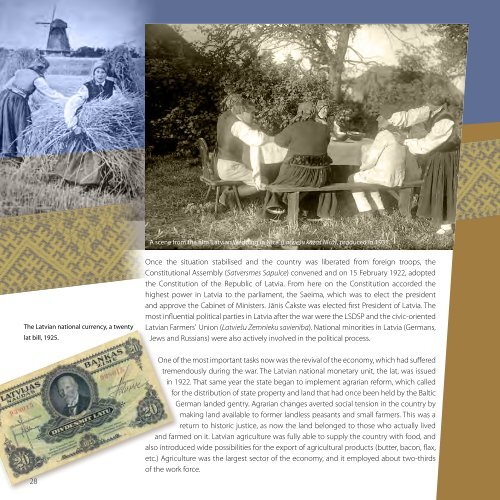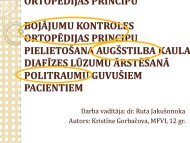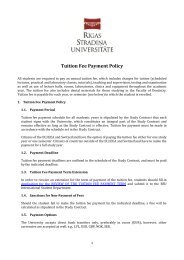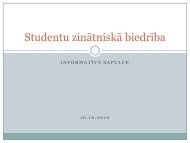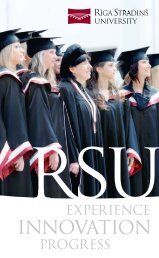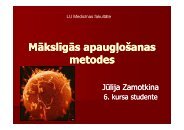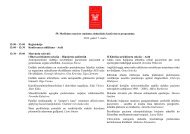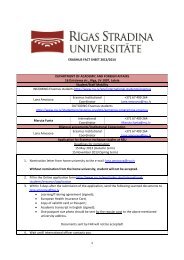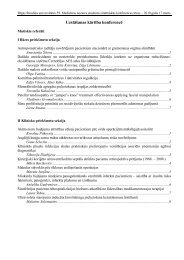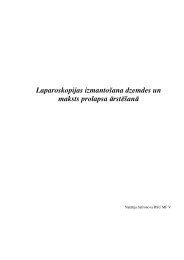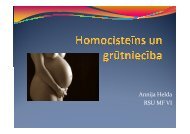History of Latvia: a Brief Survey
History of Latvia: a Brief Survey
History of Latvia: a Brief Survey
- No tags were found...
Create successful ePaper yourself
Turn your PDF publications into a flip-book with our unique Google optimized e-Paper software.
A scene from the film ‘<strong>Latvia</strong>n Wedding in Nīca’ (Latviešu kāzas Nīcā), produced in 1931.The <strong>Latvia</strong>n national currency, a twentylat bill, 1925.Once the situation stabilised and the country was liberated from foreign troops, theConstitutional Assembly (Satversmes Sapulce) convened and on 15 February 1922, adoptedthe Constitution <strong>of</strong> the Republic <strong>of</strong> <strong>Latvia</strong>. From here on the Constitution accorded thehighest power in <strong>Latvia</strong> to the parliament, the Saeima, which was to elect the presidentand approve the Cabinet <strong>of</strong> Ministers. Jānis Čakste was elected first President <strong>of</strong> <strong>Latvia</strong>. Themost influential political parties in <strong>Latvia</strong> after the war were the LSDSP and the civic-oriented<strong>Latvia</strong>n Farmers’ Union (Latviešu Zemnieku savienība). National minorities in <strong>Latvia</strong> (Germans,Jews and Russians) were also actively involved in the political process.28One <strong>of</strong> the most important tasks now was the revival <strong>of</strong> the economy, which had sufferedtremendously during the war. The <strong>Latvia</strong>n national monetary unit, the lat, was issuedin 1922. That same year the state began to implement agrarian reform, which calledfor the distribution <strong>of</strong> state property and land that had once been held by the BalticGerman landed gentry. Agrarian changes averted social tension in the country bymaking land available to former landless peasants and small farmers. This was areturn to historic justice, as now the land belonged to those who actually livedand farmed on it. <strong>Latvia</strong>n agriculture was fully able to supply the country with food, andalso introduced wide possibilities for the export <strong>of</strong> agricultural products (butter, bacon, flax,etc.) Agriculture was the largest sector <strong>of</strong> the economy, and it employed about two-thirds<strong>of</strong> the work force.


